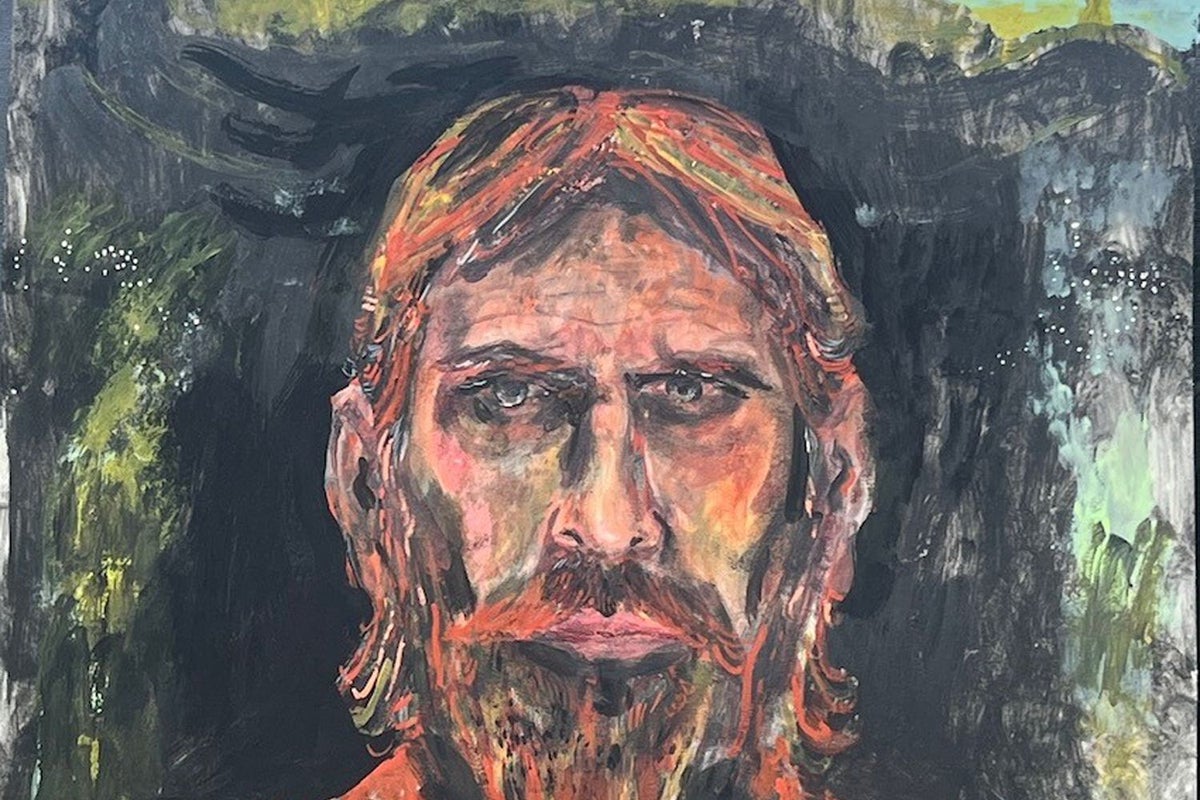
Welsh footballing legends such as Gareth Bale have inspired new portraits featuring some of Owain Glyndwr’s key supporters.
The artworks are by Dan Llywelyn Hall, the youngest artist to paint a portrait of the late Queen, and form part of a bilingual book on those who shaped the Welsh rebellion of 1400.
On September 16 that year, supporters gathered at Glyndwr’s home in Glyndyfrdwy, Denbighshire, Wales, and proclaimed him Prince of Wales.
In the following days, they were joined by thousands of men and women – including a number of influential figures who forged the vision and shape of the rebellion.
The uprising is considered to be the last Welsh war of independence and Glyndwr has since been viewed as a figurehead of Welsh nationalism and the independence movement.
A new book, entitled Llys Glyndwr, examines the lives of 23 people who came from Wales, England and France to support Glyndwr, the last native Welshman to hold the Prince of Wales title.
Each person is illustrated with a portrait by Mr Llywelyn Hall, from Cardiff, with three of the images inspired by Welsh footballers Elliot Thorpe, Gareth Bale and Gary Speed.
Gary Speed inspires a portrait of Walter Brut, while Elliot Thorpe is reflected in the image of Owain’s son, Gruffydd Glyndwr and Gareth Bale is seen in the painting of brothers Rhys and Gwilym ap Tudur.
Mr Llywelyn Hall told the PA news agency: “There is not one single surviving depiction of any of Owain Glyndwr’s court, so when I started out attempting to conjure these distant faces, I was immediately drawn to the guileful and emboldened faces of the players from the Welsh football team.
“They struck me as a perfect cast for a modern comparison with Owain Glyndwr’s supporters.
“When we think of the recent successes of the side, given we are a small nation, these underdogs punch well above their weight and embody that spirit of steeliness that the uprising of the 1400s would have been made from.”
The portraits, including Glyndwr’s daughter Catrin and wife Marged, are published with poems and a foreword by Welsh singer and language campaigner Dafydd Iwan.
Dr Rhun Emlyn from Aberystwyth University’s Department of History & Welsh History, and Professor Emeritus Gruffydd Aled Williams, from the Department of Welsh and Celtic Studies, have co-edited the book.
Glyndwr was born in around 1354 in Sycharth Castle, Llansilin, Powys and claimed descent from Llywelyn ap Gruffydd, known as Llywelyn the Last.
Due to his status, he was educated partly in England and returned home to Wales to marry wife Margaret, or Marged as she became styled.
Towards the end of the 14th century, there was growing discontent between the Welsh and the English Crown and Parliament over land disputes.
On September 16 1400, Glyndwr – then aged 50 – mobilised a militia of several hundred men in Ruthin and attacked a number of towns in the north-east of the country.
Thousands of others from across Wales and England joined the uprising, which was met by Henry IV marching an army across north Wales and bringing in anti-Welsh legislation – including outlawing Welsh-language performers.
By the end of 1403, Glyndwr controlled most of Wales and assembled a parliament at Machynlleth the following year.
From 1408, the tide turned against him, beginning with the fall of Aberystwyth and Harlech castles. His family was taken hostage and he was ruled an outlaw.
Glyndwr went into hiding and is believed to have died some time around 1415, having never come forward despite being offered a pardon by Henry V.
Dr Rhun Emlyn said: “When we think about the Glyndwr Rebellion we tend to focus on Owain Glyndwr himself.
“After all, it was Glyndwr who was proclaimed Prince of Wales, who attracted loyal followers and inspired many to rebel, and it was his forceful personality that directed the course of the rebellion and ensured that it lasted as long as it did.
“And yet, the rebellion was bigger than Owain Glyndwr. This wasn’t a one-man-show, and neither was it a campaign to secure justice for one man, but an attempt to address the complaints of people throughout Wales.
“It was truly a national rebellion that grew from the frustrations of the nation as a whole and received widespread support across the country.”
